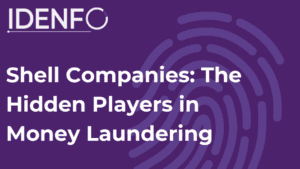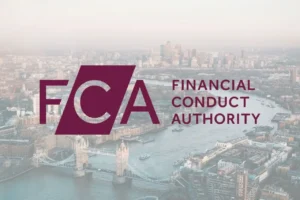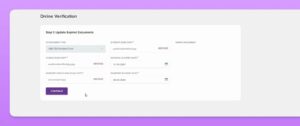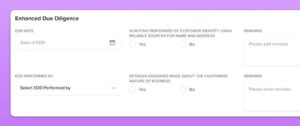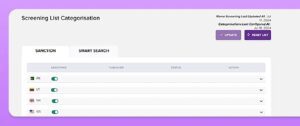In today's business environment, identifying high-risk customers is crucial for maintaining compliance and safeguarding your organization from financial crimes. High-risk customers present an elevated risk of involvement in illicit activities such as money laundering, fraud, and corruption. This guide provides a detailed approach to identifying and managing these customers effectively.
Understanding High-Risk Customers
High-risk customers are individuals or entities that, due to their characteristics or behaviors, pose a greater threat to financial institutions. These customers often exhibit traits that make them more susceptible to engaging in illegal activities, such as money laundering or fraud. Identifying these customers early allows for stricter monitoring and due diligence processes, reducing the risk of financial crime and ensuring regulatory compliance.
Characteristics of High-Risk Customers
- Involvement in High-Risk Sectors: Customers involved in sectors like gambling, cryptocurrency, and offshore banking typically pose a higher risk due to the nature of these industries.
- Politically Exposed Persons (PEPs): Individuals holding prominent public positions, such as senior government officials or political party leaders, and their close associates are considered high-risk due to their potential involvement in corruption, bribery, and money laundering.
- Connections to High-Risk Countries: Customers with links to countries with weak regulations or high levels of corruption are more likely to be involved in illicit activities.
- Complex Ownership Structures: Businesses with complex and opaque ownership structures that obscure the ultimate beneficiaries can be used to conceal illegal activities.
- Unusual Transaction Patterns: Customers who exhibit unusual or suspicious transaction patterns, such as high-value transfers or frequent cash deposits, may be engaging in money laundering or other illicit activities.
Identifying High-Risk Customers: A Step-by-Step Guide
- Implement a Risk-Based Approach: Financial institutions should assess the risk of each customer based on their profile, assigning more resources to monitor high-risk customers closely.
- Customize Customer Onboarding Questionnaires: Tailor your account opening questionnaires to gather data points that reveal potential risk factors, such as customer location, industry, and transaction patterns.
- Screen Against Sanctions and Watch Lists: Regularly screen customers against international sanctions lists, such as those maintained by OFAC and the UNSC, to ensure they are not listed.
- Monitor Transactions: Implement robust transaction monitoring systems that can detect unusual or suspicious activities in real-time. These systems should flag transactions that deviate from established patterns or involve high-risk countries or entities.
- Conduct Enhanced Due Diligence (EDD): Apply enhanced due diligence measures to high-risk customers, including obtaining additional identification documents, conducting deeper background checks, and monitoring transactions more frequently.
- Leverage Technology: Utilize advanced technologies like AI and machine learning for real-time monitoring and accurate risk assessment. These technologies can help identify suspicious activities faster and reduce false positives.
- Regularly Update Customer Profiles: Customer profiles should be reviewed and updated regularly to reflect any changes in their risk level, ensuring effective monitoring and compliance with regulations.
- Screen Customer's Background and Reputation: Screen your customer's background, checking for any adverse media reports, legal issues, and possible associations with criminal activities.
Best Practices for Managing High-Risk Customers
- Implement a Risk-Based Approach: Assess the risk of each customer based on their profile and assign more resources to monitor high-risk customers closely.
- Use Advanced Technology: Leverage tools like AI and machine learning for real-time monitoring and accurate risk assessment to identify suspicious activities faster and reduce false positives.
- Regularly Update Customer Profiles: Customer profiles should be reviewed and updated regularly to reflect any changes in their risk level, maintaining effective monitoring and compliance with regulations.
- Comply with KYC and AML Regulations: Ensure compliance with Know Your Customer (KYC) and Anti-Money Laundering (AML) regulations to verify the identity of your customers and assess their risk profiles.
- Ongoing Monitoring: Continuous monitoring of transaction patterns and periodic reassessment of customer information are essential to detect changes in risk levels and ensure timely updates to risk scores and compliance measures.
Conclusion
Identifying and managing high-risk customers is essential for protecting your organization from financial crimes and ensuring compliance with regulatory requirements. By understanding the characteristics of high-risk customers and implementing robust identification and management strategies, businesses can mitigate risks and safeguard their operations.
What defines a high-risk customer?
A high-risk customer is an individual or entity that poses a greater risk of involvement in financial crimes such as money laundering, fraud, or corruption. This risk is often based on factors like their industry, geographic location, transaction behavior, or political exposure.
Why is it important to identify high-risk customers?
Identifying high-risk customers helps businesses comply with regulatory requirements, prevent financial crimes, protect their reputation, and avoid legal penalties.
What industries are typically considered high-risk?
Industries such as gambling, cryptocurrency, offshore banking, cash-intensive businesses, and money service businesses are generally considered high-risk due to the nature of their operations.
How often should customer risk profiles be updated?
Customer risk profiles should be reviewed and updated regularly, at least annually or whenever there is a significant change in the customer’s behavior, ownership, or regulatory environment.
Can technology help in identifying high-risk customers?
Yes, advanced technologies like AI, machine learning, and automated screening tools can significantly improve the accuracy and efficiency of identifying and monitoring high-risk customers.
Frequently Ask Questions (FAQ)
What defines a high-risk customer?
A high-risk customer is an individual or entity that poses a greater risk of involvement in financial crimes such as money laundering, fraud, or corruption. This risk is often based on factors like their industry, geographic location, transaction behavior, or political exposure.
Why is it important to identify high-risk customers?
Identifying high-risk customers helps businesses comply with regulatory requirements, prevent financial crimes, protect their reputation, and avoid legal penalties.
What industries are typically considered high-risk?
Industries such as gambling, cryptocurrency, offshore banking, cash-intensive businesses, and money service businesses are generally considered high-risk due to the nature of their operations.
How often should customer risk profiles be updated?
Customer risk profiles should be reviewed and updated regularly, at least annually or whenever there is a significant change in the customer’s behavior, ownership, or regulatory environment.
Can technology help in identifying high-risk customers?
Yes, advanced technologies like AI, machine learning, and automated screening tools can significantly improve the accuracy and efficiency of identifying and monitoring high-risk customers.




